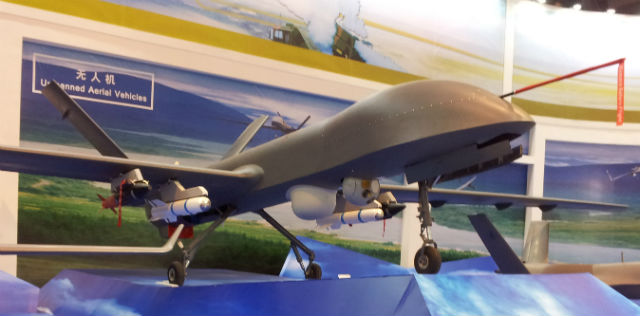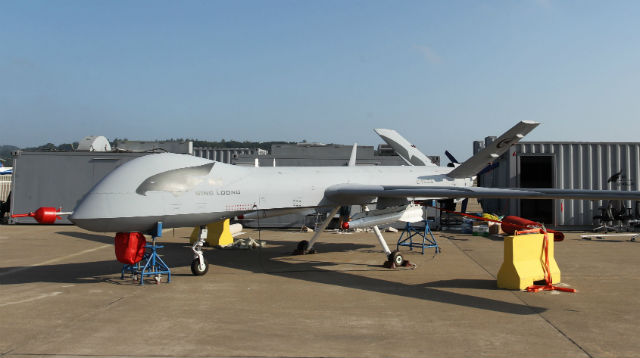Wing Loong
China’s biennial air shows in Zhuhai offer a rare glimpse into Beijing’s efforts to develop capabilities such as unmanned aircraft, military jet engines and advanced weapons.
This year’s iteration, held from 13-18 November, was no different, with Chinese aerospace firms revealing some impressive new capabilities and offering tantalising hints about the future.
As with previous events, Airshow China 2012 provided an insight into Beijing’s development activities and aspirations in the unmanned aircraft sector.
One of the key attractions at the 2010 show was a large mural labelled “Sea Defence System”, which showed an apparently developmental UAS, the China Aerospace and Science Corporation (COSIC) WJ-600, striking a US Navy Arleigh Burke-class destroyer with an air-to-surface missile, and also vectoring long-range, truck-launched cruise missiles against a US aircraft carrier.
This year saw the concept reprised, but with the WJ-600 and other UAS attacking only generic surface ships.
Labelled as a “medium-range, high-speed UAS,” the turbojet-powered WJ-600 will have a 3-5h endurance, a maximum speed of 486kt (900km/h), and a payload of 130kg (286lb).
“Allowing different payloads such as (electro/optical) reconnaissance devices, search and rescue, electronic reconnaissance devices, and miniature missiles, this UAS is flexible in combat deployments to carry out various missions, such as aerial reconnaissance, target indication, precision strike, and damage assessment,” COSIC says.
A graphic on the company’s display showed the UAS being launched from a canister on the bed of a truck. It would then deploy conventional landing gear for recovery on an airstrip.
Making its public début in the static display was AVIC’s Wing Loong UAS, which resembles the General Atomics Aeronautical Systems MQ-1 Predator, with two air-to-surface missiles carried beneath its wing.
 CH4
CH4
Aerospace Long-March International also exhibited a scale model of its CH-4 medium-altitude, long-endurance UAS. This featured four hardpoints for weapons, an electro-optical sensor turret, and what appeared to be a dome for a belly-mounted surface search radar.
Leaflets available at the latter company’s stand suggested that it is working on a range of UAS, from the man-portable CH-802 to the CH-3A; a large, missile-armed type with a maximum take-off weight of 640kg and an operational radius of 108nm (200km).
Source: Flight Global

